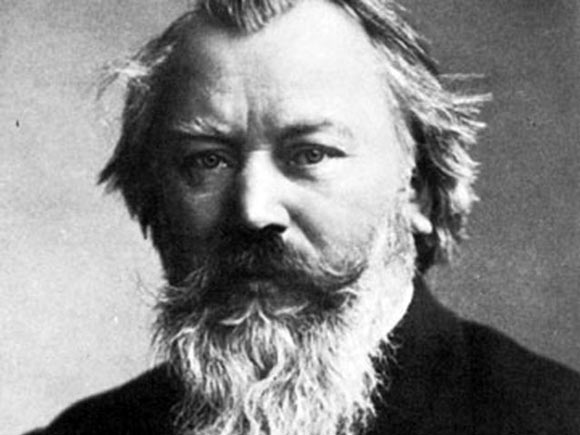
Often grouped with legends such as Bach and Beethoven, Brahms is another fine example of a prodigy of classical music from the Romantic era. The German composer and pianist is known for his attachment to the traditional structure he witnessed in the music of earlier legends, yet is also famed for his innovation. Brahms put together combinations that were streaked with bold and unforeseen structural approaches, while subtly honoring the techniques of the earlier Baroque period. Brahms mostly worked on keyboard and choral compositions, concerti, symphonies and chamber music.
Born on 7 May 1833 in Hamburg, due to the influence of his father, Brahms was launched in to the musical tradition rather early. By age of 7 he was a fluent pianist and many sources rather famously report that at the age of 11 he either played or improvised his own piano sonata. It is safe to say that as a young teenager Brahms had cultivated his skills by working at locals inns, restaurants and brothels and had become a proficient musician. His early 20s marked the beginning of his recognition when he went on a concert tour in 1853 as an accompanist and met some influential musicians, who eventually introduced him to Robert Schumann. Brahms and Schumann’s relationship is considered a milestone of his career and personal life. Schumann’s trust in Brahms’ talent led him to openly applaud the young virtuoso which greatly increased his fame in the music world; Together they both composed the F-A-E sonata-‘Free but lonely’.
After his close companion Schumann passed away in 1856, Brahms took up several posts in Hamburg and Detmold. He was the conductor of the ladies choir in Hamburg and a court musician in the latter. During this time, he still continued to produce several works such as his string sextet in B-flat major and piano concerto No. 1 in D-Minor. In the early 60s Brahms started spending an increasing amount of time in Vienna and eventually moved there and took up the position of director at a choral group, named Singakademie. His years in Vienna can be marked out as the years of success and popularity in his career. The most remarkable moment of his career that proved him to be one of the most sought out musicians in Europe was in 1868, when he finished his work on The German Requiem. This Biblical composition not only portrayed Brahms’ mastery over the techniques of Beethoven and the symphony, but also his versatility and skill to flawlessly combine mixed chorus, solo voices and a complete orchestra. The positive response to this piece is often presumed to have given him the confidence and inspiration to finish many other works such as his cantata named Rinaldo, his first symphony and three others in subsequent years. These four symphonies have been branded within the scores of symphonic literature and are undoubtedly part of his many contributions to classical music.
Johannes Brahms’ last formal position was in 1875 as the principal conductor for the Society of Friends of Music, after which he mostly continued his own work until he passed away on April 3 1897 in Vienna. One of his most famous solo pieces was the Violin Concerto in D major, since it highlighted Brahms’ flair and skill as a soloist. Moreover, it is another example of the versatility of his work since it is still broadly incorporated in the contemporary musical scene such as in the film “There Will Be Blood (2007)”. Brahms was a true perfectionist which is an odd to the quality of his work and is why his work is considered as a legend from the Romantic era.